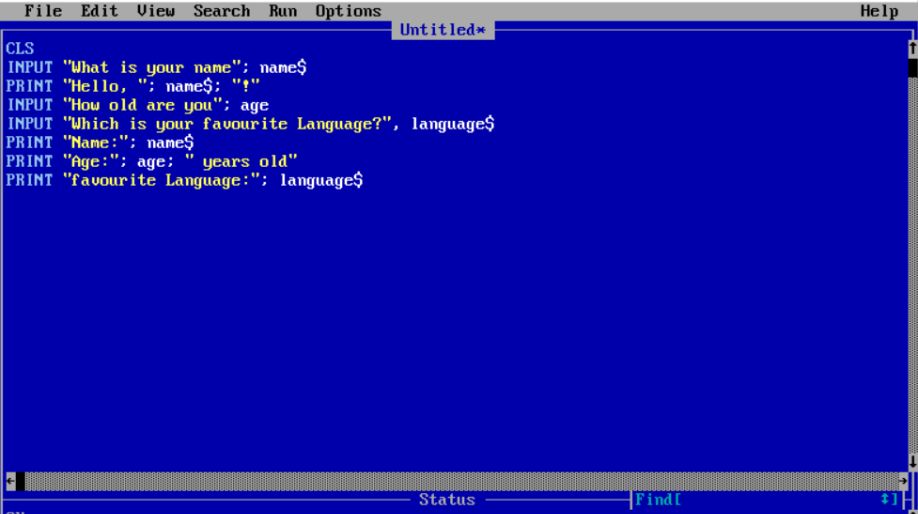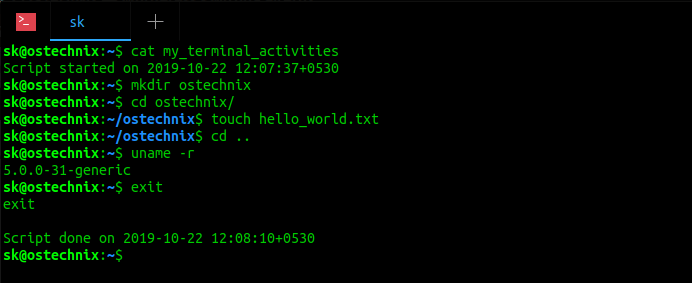(redirected from Beginners All Purpose Symbolic Instruction Code)
Also found in: Dictionary, Thesaurus, Medical, Financial.
BASIC:
Explore VS Code features in the Interactive Editor Playground. User Interface - View the documentation for VS Code. Setup Overview - Documentation for getting up and running with VS Code, including platform specific setup. Keyboard Shortcuts - Customize your own shortcuts, download a reference sheet, or install a Keymap extension. Beginners All-purpose Symbolic Instruction Code IT Downloads (View All Report Types) Adobe Flash Builder 4. Sponsored by Adobe. SOFTWARE DOWNLOAD: Enterprises are challenged to create easy to use rich Internet applications that enable users and customers to access and interact with data and content in more intuitive and visual ways. BASIC (Beginner's All-purpose Symbolic Instruction Code): BASIC was an early programming language that is still among the simplest and most popular of programming languages. BASIC stands for 'Beginner's All-purpose Symbolic Instruction Code.' Originally designed as an interactive mainframe timesharing language by John Kemeney and Thomas Kurtz. Jan 27, 2019 Beginnings of BASIC The language BASIC was an acronym for Beginner's All-Purpose Symbolic Instruction Code. It was developed by Dartmouth mathematicians John George Kemeny and Tom Kurtzas as a teaching tool for undergraduates. CODE gon Brock 01 KLIq bl.otv!qce 1 pc coqca 01. Pc qcrC1.11J!1Jcq ploctCODE.
see programming languageprogramming language,syntax, grammar, and symbols or words used to give instructions to a computer. Development of Low-Level Languages
All computers operate by following machine language programs, a long sequence of instructions called machine code that is
.....Click the link for more information..
basic
 [′bā·sik] (chemistry)
[′bā·sik] (chemistry) Beginner's All Purpose Symbolic Instruction Code Tutorial Android Studio
(petrology)BASIC
[′bā·sik] (computer science)basic
1.ChemBASIC
Beginner 27s All Purpose Symbolic Instruction Code Tutorial For Beginners
, Basic
BASIC
(language)BASIC has become the leading cause of brain-damage in proto-hackers. This is another case (like Pascal) of the cascading lossage that happens when a language deliberately designed as an educational toy gets taken too seriously. A novice can write short BASIC programs (on the order of 10-20 lines) very easily; writing anything longer is painful and encourages bad habits that will make it harder to use more powerful languages. This wouldn't be so bad if historical accidents hadn't made BASIC so common on low-end micros. As it is, it ruins thousands of potential wizards a year.
Originally, all references to code, both GOTO and GOSUB (subroutine call) referred to the destination by its line number. This allowed for very simple editing in the days before text editors were considered essential. Just typing the line number deleted the line and to edit a line you just typed the new line with the same number. Programs were typically numbered in steps of ten to allow for insertions. Later versions, such as BASIC V, allow GOTO-less structured programming with named procedures and functions, IF-THEN-ELSE-ENDIF constructs and WHILE loops etc.
Early BASICs had no graphic operations except with graphic characters. In the 1970s BASIC interpreters became standard features in mainframes and minicomputers. Some versions included matrix operations as language primitives.
A public domaininterpreter for a mixture of DEC's MU-Basic and Microsoft Basic is here. A yaccparser and interpreter were in the comp.sources.unix archives volume 2.
See also ANSI Minimal BASIC, bournebasic, bwBASIC, ubasic, Visual Basic.
BASIC
(Beginners All purpose Symbolic Instruction Code) A programming language developed by John Kemeny and Thomas Kurtz in the mid-1960s at Dartmouth College. Originally developed as an interactive timesharing language for mainframes, BASIC was widely used on the first personal computers. Microsoft's BASIC helped make the Altair the first commercial success of an assemble-it-yourself microcomputer (see Altair). See timesharing, Business Basic and Visual Basic. Compiler and Interpreter
Compiler and InterpreterBASIC is available in both compiler and interpreter form. As an interpreter, the language is conversational and can be debugged a line at a time. It can also be used as a quick calculator.
BASIC is considered one of the easiest programming languages to learn, and simple programs can be quickly written on the fly. The following BASIC example converts Fahrenheit to Celsius:

Want to thank TFD for its existence? Tell a friend about us, add a link to this page, or visit the webmaster's page for free fun content.
Link to this page:
Computer programming is the process of designing, building, and commanding a computer to do a particular computing task. We need to write some codes in some particular programming language in order to instruct/command our computer to do a particular task. Today we have lots of programming languages to choose, however here we will learn about QBASIC programming language, which is one of the easy to learn languages for beginners.
What is QBasic Programming?
QBASIC stands for “Quick Beginners All-Purpose Symbolic Instruction Code”. QBASIC was developed by Microsoft Corporation in the year 1991. It is considered to be one of the most easy-to-understand programming languages for beginners. It is suitable for both mathematical and business problem solving and it has been adopted by most of the microcomputers.
QBASIC is a replacement of the GWBASIC (Greg Whitten – BASIC). It was based on the escort antalya QuickBASIC 4.5 compiler. QBASIC is only compatible with MS-DOS Environment on windows, it usually contains two files: 1.QBASIC.EXE and QBASIC.HLP. These two files help us to debug, edit and execute code in the DOS environment. QBASIC doesn’t produce a .exe file, the files are saved with .bas extension.
History of QBASIC Programming Language
In the year 1985 QuickBASIC was originally released. It was sold on a 5.25” floppy disk. The second version Version 2.0 was released in the year 1986 and it was available in both 5.25” and 3.5” floppy disk. Version 2.0 had a built-in user interface for the comfort of users.
In 1988, the latest version QuickBASIC 4.5 was released it had fixed a few problems from the previous version and was compatible with any computer from 8088 with DOS 2.11 to a Windows XP machine.

And in the year 1991, QBASIC programming language builds as a replacement/upgrade version of the old GW-BASIC. The language was based on QuickBASIC 4.5 but it didn’t have QuickBASIC’s Compiler and also the linker elements. The first version of QBASIC (Version 1.0) was antalya escort bayan shipped with MS-DOS 5.0 and higher. It was also shipped with Windows 95, Windows NT 3.x, Windows NT 4.0 and Windows 98. It was not shipped with Windows XP but a user can install and use it in their XP machine without any issues.
Starting with QBASIC
QBASIC is an Open- Source software, which means you can use it for free.
The whole QBASIC window is divided into two parts :
Program Window:
It is where people can write/edit their codes. The window is titled as ‘Untitled’ by default which can be changed when the user saves the program into a disk.
Immediate Window:
The Window titled ‘Immediate’ is the Immediate Window. This window is used as a debugging tool and the outputs of every single command statement can be seen here.
Applications Of Qbasic
- Qbasic Programming language is a very suitable and easy-to-understand language for beginners. It helps to understand the basics of programming without having much knowledge about the internal working of the computer.
- Qbasic is used to create simple games, business applications, and even simple database projects. The commands line SET, CIRCLE, LINE, etc that helps the programmer to draw using Qbasic.
- Another application of Qbasic is that it supports to create sounds of different frequencies, which can be played using your computer speaker.
Advantages of QBASIC
QBASIC Programming language is quite simple and easy-to-understand language. And there are lots of advantages to this language for beginners.
- Firstly, its open source and so free to use by anyone. It is easily downloadable from the internet.
- This language is available for every computer (from micro-computers to mainframes).
- Suitable for mathematical and business-related applications.
- Writing/editing code is very easy and fun.
- Debugging is simple and easy
- QBASIC automatically checks the syntax for errors.
Disadvantages of QBASIC
- It is not a structured programming language.
- QBasic is Dos based programming language and at present time it has become obsolete and now it is only used in Education and as a beginner’s programming language.
- QBASIC do not generate any executable file(.exe), the files are saved in .BAS extension.
Difference between QBASIC and QuickBasic?
The difference is that QBASIC is an open-source, shareware software, while QuickBasic is a commercial software. As compared to QuickBasic, QBASIC can handle programs which is of a specific limited size. QBASIC does not have the support of the QuickLibrary modules, it only has the standard QB.QLB. QBasic is only is a program interpreter. It just executes raw code, it cannot be used to create executable files directly.
How to start coding in QBASIC programming language?
To start coding, you need to check our article on how to download and install Qbasic in your Windows 7,8 and 10.
Next, check out the basic Qbasic programming commands to understand the basis of the commands used in the language.
Some Important QBASIC Program FAQs.
What are some of the uses of QBASIC programming?
Qbasic has applications on application side, it helps to break a large program into modules and use it. It is good for beginners who are need to coding, especially kids. It can be easily portable across application since it easier to develop.
How do I start a QBASIC in a computer?
If you are using windows xp or older version of windows you can easily find the executable file in Start button, then just click QBASIC.exe . But if you are using present-day version of windows like Windows 7, Windows 8 or 10, than you can follow the like on how to download and run QBASIC in windows7 and windows 10.
Is QBASIC a high level programming language?
Yes it is a high-level-programming language. You can also get other version of BASIC like GWBASIC, Quick BASIC, Turbo BASIC, Visual BASIC.
What is the full-form of QBASIC?
QBASIC stands for “Quick Beginners All purpose Symbolic Instruction Code”.
What software should I use to run QBASIC?
In older of windows like MS-DOS, it use to come preinstalled. However in modern system you need some kind of a DOS- Emulator or run inside a virtual environment like VMWare.
Who invented/ developed QBASIC programming language?
QBASIC was developed by two Professors John G. Kemeny and Thomas E. Kurtz